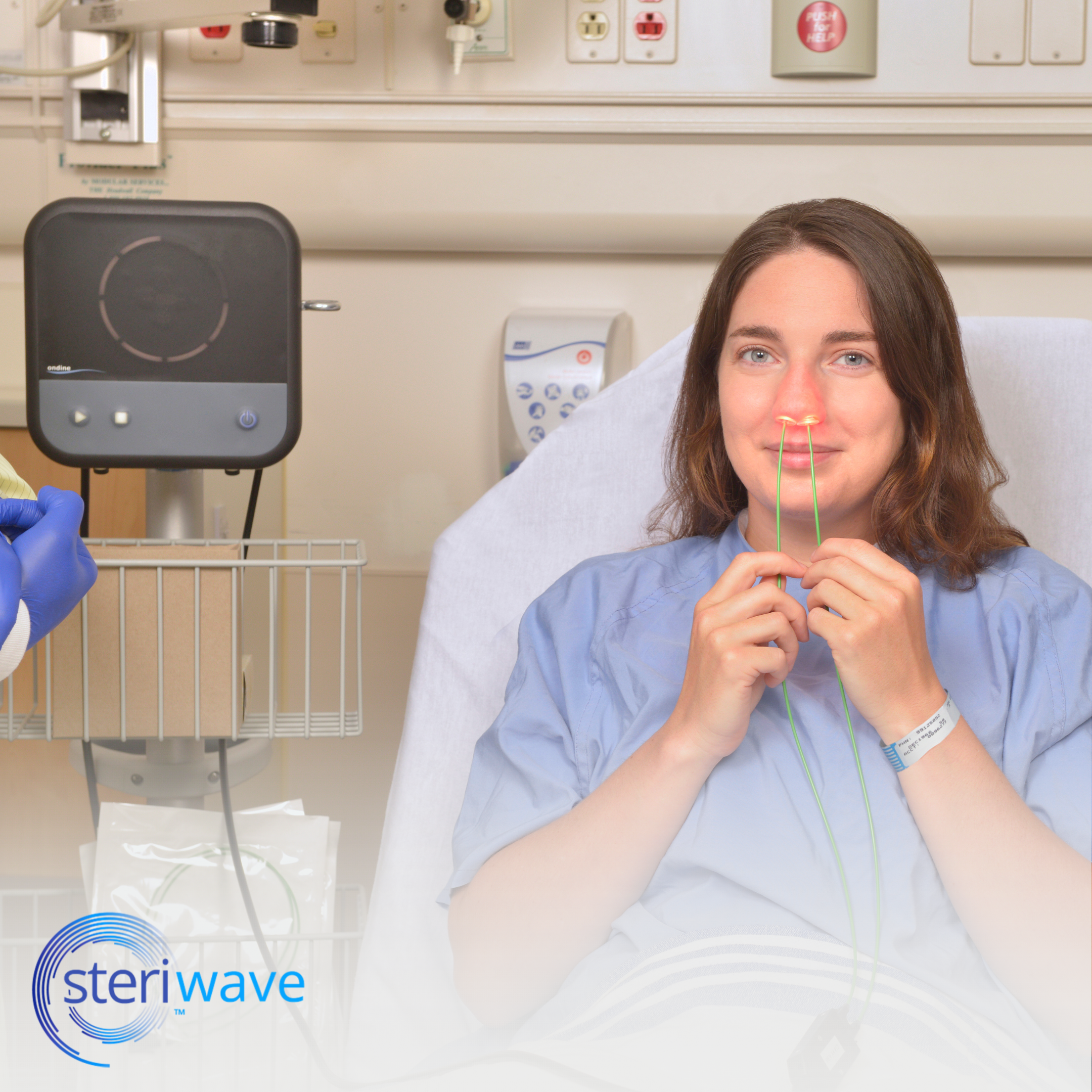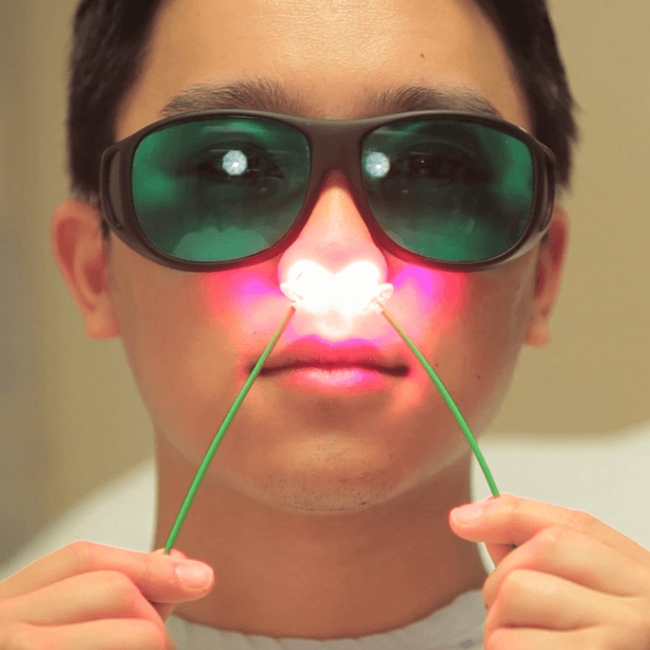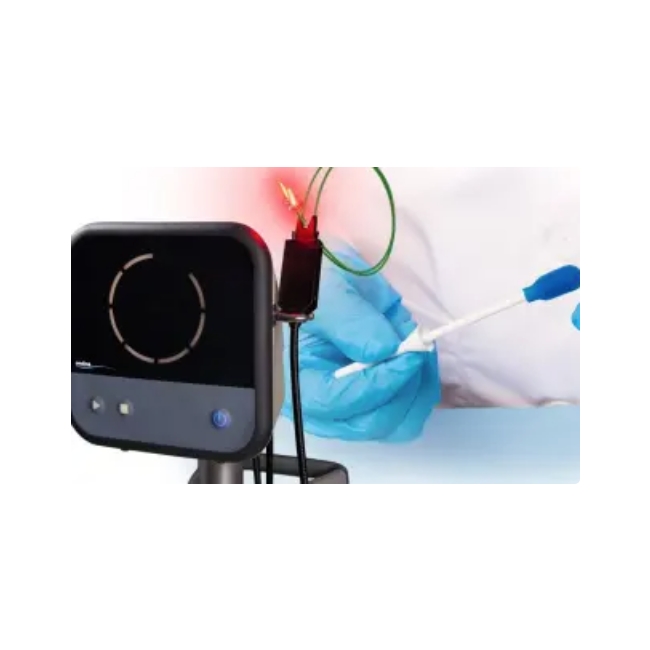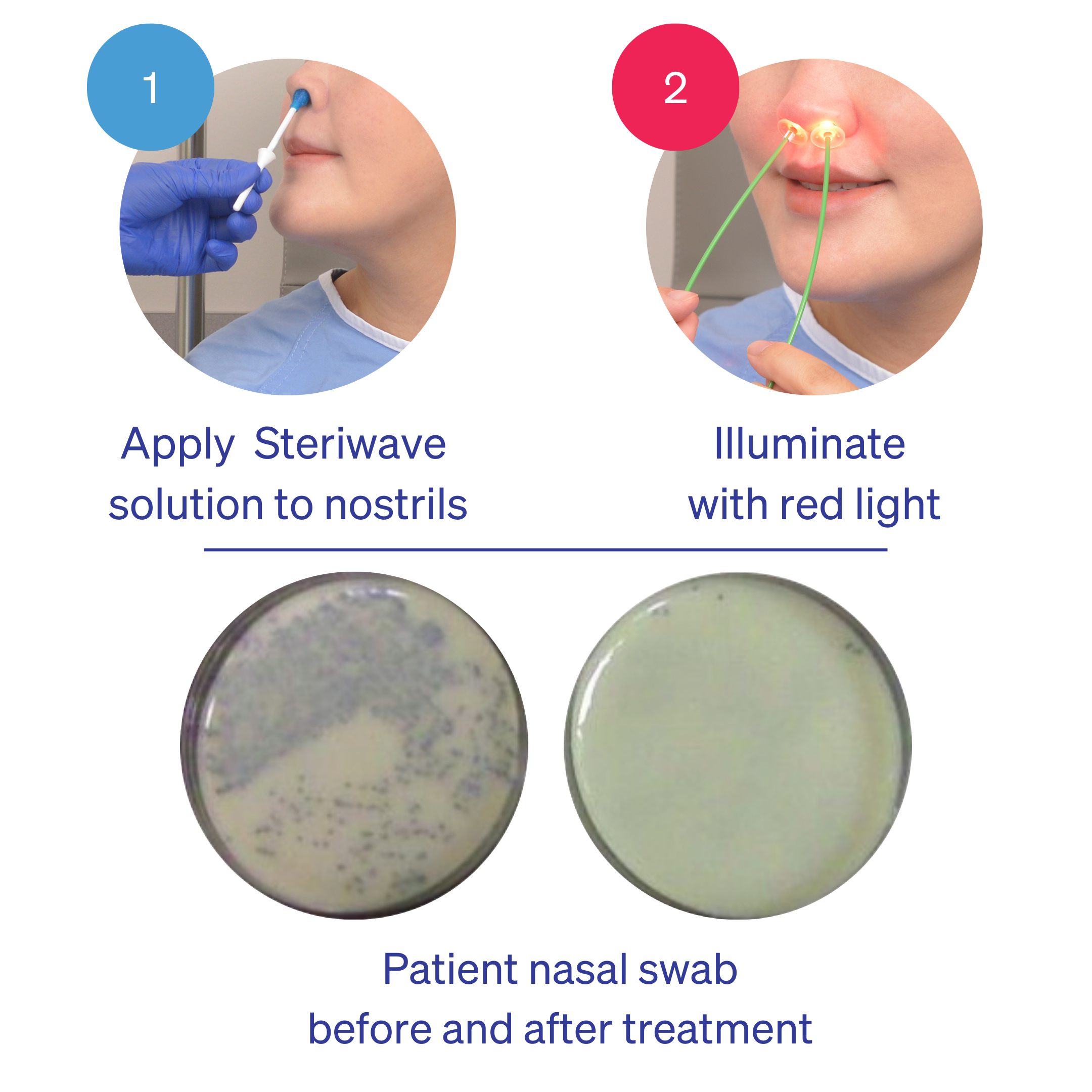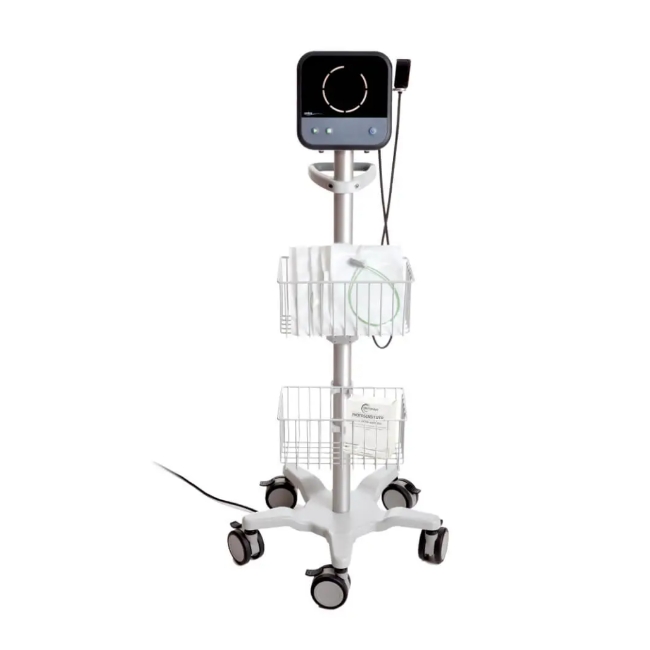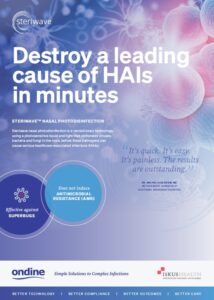Steriwave™ eliminates a major source of infections with a simple, 5-minute treatment so patients can be healthier and hospitals free up critical resources for more patients.
Test
Description
Technology to reduce infections
Steriwave™ eliminates a major source of these infections with a simple, 5-minute treatment so patients can be healthier and hospitals free up critical resources for more patients. Photodisinfection eliminates topical pathogens rapidly and does not generate resistance. It is a highly effective antimicrobial that targets bacterial biofilm, viruses, yeasts and fungi without harming human tissue.
- Kills a broad spectrum of pathogens (bacterial, viral, fungal), including superbugs
- Immediately effective
- Promotes high compliance
- Non-resistance forming
- Single application lasts days, not hours
Features & Benefits
Reduce the Germs, Reduce the Risk of Infection
The nose harbours bacteria, viruses and fungi in a moist, sheltered, oxygenated environment without substantial exposure to the immune system.
The nasal passages filter the air we breathe and stop tiny foreign particles or microorganisms from entering the body.
The nose and nasal passages are the perfect environment for the growth of pathogens. For example, Staphylococcus aureus is a bacterium that lives in the nose of approximately one-third of the general population.
These nasal germs are easily spread as we breathe, sneeze, or touch our face with our hands and then inadvertently transfer the germs to objects in the environment, our friends and co-workers, and other parts of our body. If you have a wound, surgical site, or other break in the skin, these germs can invade and cause an infection.
The process of removing or reducing germs in the nose is called “nasal decolonisation”. Nasal decolonisation has been shown to reduce the risk of infection, especially among high-risk patients, including those undergoing surgical procedures, immunocompromised patients, ICU patients, and those requiring long-term and frequent healthcare services (e.g. nursing homes, dialysis).
Reducing germ count in the nose is part of good infection control practices such as frequent handwashing, skin preps before surgery, good oral care and a clean environment.

Kill Germs Living in the Nose in Minutes
- First, the blue Steriwave liquid is gently applied in to each nostril
- Then non-thermal red light is used to activate the liquid for a few minutes.
Steriwave works by rapidly destroying microbes upon light activation. The pathogens cannot adapt to this treatment, eliminating the concern of antimicrobial resistance.
Photodisinfection
What is nasal photodisinfection?
Photodisinfection delivers fast, broad-spectrum microbial kill in minutes via a specific combination of factors:
- The specially formulated positively-charged photosensitising solution preferentially binds to microbes whose cell walls are negatively charged. The photosensitizer solution is inactive at this stage.
- Non-thermal laser light calibrated to a specific wavelength and intensity triggers a reaction in which the sensitiser generates singlet oxygen.
- These potent reactive oxygen molecules destroy the cell walls of pathogens. When the light is removed the reaction ceases.
Photodisinfection destroys bacteria, viruses and fungi without harming human cells or causing antimicrobial resistance.
How Steriwave Photodisinfection works to protect you.
Clinical Evidence
Real-world results
Steriwave’s user-friendly technology is well-received by nurses and patients alike, with over 8,000 surgical patients decolonised annually.
Canadian hospitals implemented our photodisinfection technology for orthopaedic, spinal, and several other surgical specialities with compelling results in the first year.*
- 42% surgical site infection reduction.
- CAD $1.9M costs avoided + 552 bed-days saved.
- 3,068 surgical patients decolonised during the initial year.
- 94% compliance with decolonisation.
- 3.7x reduction in surgical site infection (SSI) risk (P=0.00026).
Since 2011, Steriwave has become a vital component of the hospital’s surgical infection control efforts that, together with NSQIP and additional surgical bundles added in the intervening years, have led to the hospital reducing its overall SSI rate to less than 0.5%.


